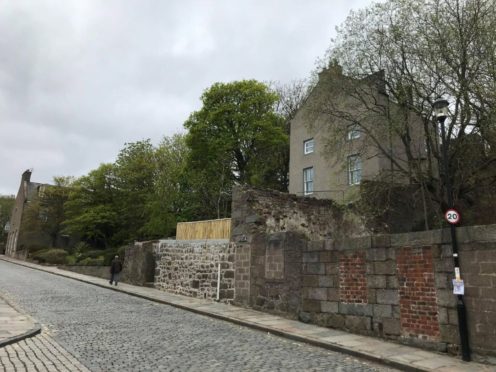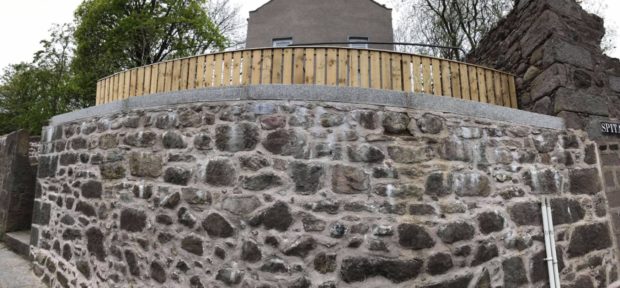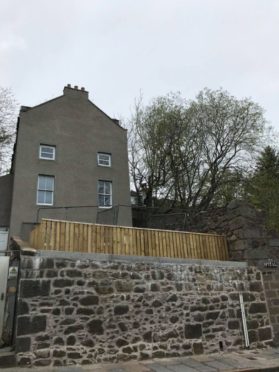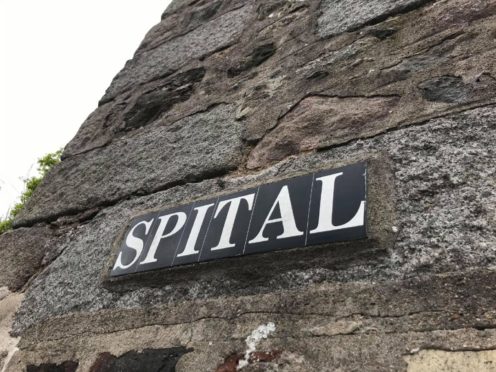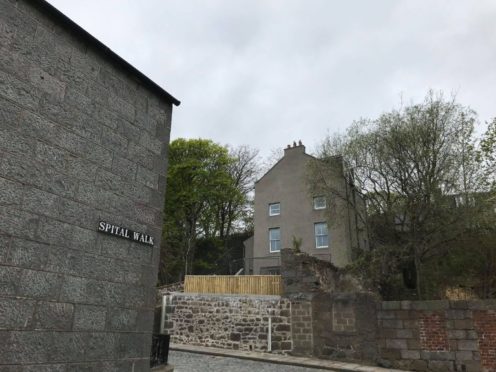Anger has erupted in a quiet Aberdeen community after “unauthorised” imported granite slabs were used when rebuilding a wall.
The bricks atop the refurbished wall along the Spital have been described as “damaging” to the surrounding Old Aberdeen Conservation Area.
The owners of the property in question insist that the changes were made as the wall was at risk of collapsing and posed a threat to passersby.
But they undertook work to upgrade the structure before getting planning permission from Aberdeen City Council.
The dispute centres on the large white “coping” slabs laid at the top of the boundary.
Life-long resident ‘angered’
One neighbour, Terence Farquharson, reckons the proprietors need to undo the contentious aspect of the work.
Mr Farquharson, a life-long Old Aberdeen resident, made his unhappiness known in a letter to the council.
He said: “This has totally destroyed the visual aspect of a very quaint and historic building within the Old Aberdeen Conservation Area.
“The use of a light coloured mortar only emphasises the mismatch to the adjoining part of the east wall, which has been left in the original condition apart from the reseating of the coping bricks again using this light coloured mortar which is ugly to the eye.
“It has been said there was a rush to complete these works in case a member of the public was injured by falling bricks.
“May I point out that these bricks have been in place for many decades and in the 50 years I have lived opposite 177 Spital, not one brick has fallen.”
The old coping bricks appeared to be set aside to be reused last October when the wall was dismantled, Mr Farquharson added.
But from his vantage point across the lane, he could only watch in dismay as they were later carted off along with all the other debris.
It was at that point that he says that “a crate of the offending imported granite arrived and was craned into place”.
Mr Farquharson is now hopeful that the council might force the owners into action.
He said: “I have lived in Old Aberdeen all my life surrounded by cobbled streets and traditional buildings of great age, but this unsympathetic and detrimental work angers me.
“May I respectfully suggest that this offending, totally out of place silver granite, is removed and red bricks, similar to the original ones, be reinstated so that the visual symmetry is restored to a fine building.”
‘Out of character’
Robert and Gail Fletcher-Grasby agree that at least part of the replacement needs to be taken down.
In a letter of objection on the council’s online planning database, they say it is “easy to see the damaging effect” the “huge slabs of white Chinese granite” are having on the historic area.
Community leaders also object
Old Aberdeen Community Council discussed the matter at a recent meeting and members decided to object.
A letter penned on behalf of the group by Steve Berry says that the local leaders “appreciate” the importance of the repair work due to safety concerns”.
But the response says the large slabs of imported granite are “not suitable to this location”.
The community council cites local authority guidelines which state that the “use of
new granite, particularly imported granite, can dilute the city’s existing local granite heritage”.
Owner defends decision
The owner of the property in question told us that the wall needed to “urgently” be saved from collapsing, having been monitored by a structural engineer for two years.
She added: “The wall was then rebuilt using the original stones.
“The mortar used is a traditional mortar and a good match with the historical mortars originally used on walls and buildings in the area.
“In fact, the wall probably resembles what it first looked like when it was built 200 years ago. The mortar will age and darken over the next decades.
“Unfortunately, the coping bricks could not be saved. Many were broken and they disintegrated when the wall was being dismantled.
“As there is granite coping on both walls that adjoin this wall it seemed that using granite would be a good hard-wearing and sympathetic option as it would blend in. Again after discussion and careful consideration it was felt that the granite would weather in.”
Locals are proud of storied surroundings
The scenic part of the Granite City was named as a historic conservation area in 1968.
Council papers state that it is “an extremely important conservation area because it encompasses a complete town centred on the medieval route from Aberdeen north to the Brig o’ Balgownie, the first inland crossing of the River Don”.
